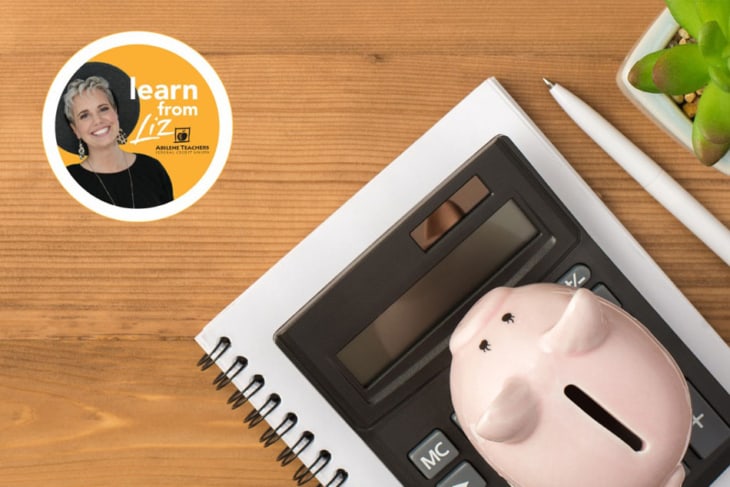12 Steps to Financial Wellness – Step 2: Creating a Budget

Last month we started with Step 1 of our 12 Steps to Financial Wellness (you know, because there are 12 months in a year). Anyway, you learned different ways and techniques you can use to track your spending. If you have not done that yet, go back and read through Step 1 before moving on to Step 2. Assuming that you’ve tracked your spending and kept a careful record of where your money goes over the course of a month, you’re ready to move onto the next step of financial wellness: creating a budget. Budgets play a crucial role in promoting financial awareness, which then helps to facilitate more responsible money choices. This discipline will not only benefit you but everyone in your household.
Let’s get started by taking a look at how to create a budget and review some popular budgeting systems and how they work.
Create a Budget in 6 Steps:
- Track your spending and income. This includes all your financial documents, such as your account statements, bills and pay stubs. I would try to do this for at least 3 months to get a good idea of how things look like over time rather than using information from only one month as your standard. It might even be good to pick three months not next to each other to see how your expenses change based on the time of year and average the spending. [If you’ve followed Step 1, you’ve already completed this step–nice work getting ahead of the game!
- Tally up your totals. Calculate the totals of your monthly expenses and all your streams of income. If your income exceeds your expenses, you’re in a good place. However, if your expenses exceed your income, or the numbers are too close for comfort, you’ll need to trim some discretionary expenses to make it through the month without falling into debt if an unforeseen big expense happens.
- I facilitate Economic Reality Fairs for local high school seniors. In this exercise they have to spin the “Wheel of Reality”. Half the options it can land on are positive and the other half, not so much. It ranges from getting money for your birthday to getting an income tax return to having a flat tire or having to take your dog to the vet. Some kids get to add money into their monthly budget and some have to subtract because of an unexpected expense. I tell the students that they should expect unexpected expenses EVERY SINGLE MONTH!
- It is easy to budget for my mortgage and insurance because I know I am going to have to pay those every month and know how much they will be. But inevitably someone has a birthday or a baby shower or wants to go to the movies or on a date night or your A/C stops working or your refrigerator quits. Every month you need to set aside some money for those unexpected expenses that will come up and you never know how much money they will require. Best case scenario, you don’t have an unexpected expense this month and you just get to save that money or buy yourself something you’ve been wanting.
- List your needs. Your needs include anything that is essential for living and basic functions, such as rent or mortgage payments, savings, food and clothing. Needs always take priority in a budget. As you list each need, write down its corresponding cost. Sum up the total of your needs when you’ve finished. (Download a helpful budget worksheet from our website if you need some inspiration.)
- You may be wondering why savings and clothing are listed in this category. Well, saving NEEDS to become a priority and something you do regularly, just like paying your mortgage. If you wait until after you’ve paid for your bills and your “wants”, you will rarely have anything left over for savings.
- Clothing expenses can go in both the ‘needs’ and ‘wants’ categories. I need clothes in order to leave my house and I need decent ones for work and to look nice but, with that being said, I don’t need the most expensive clothing. I may want all my clothes to come from K. Ellis Boutique and want all the Michael Kors shoes but those would be wants and not needs. Make sure you are only buying things you can afford and save up for splurges.
- List your wants. This includes anything that is not essential for living, like entertainment costs, brand-name clothing and eating out. Here, too, note the monthly cost of each item on your list and add up the total when you’re done.
- Assign dollar amounts to your expenses. If you’ve not already done so, assign monetary amounts to your list of expenses. Start with fixed-cost needs, then non fixed-cost needs, and finally, your wants.
- Review and tweak as necessary. You will likely need to adjust the amounts in each expense category at least once a year to keep your budget relevant. Hopefully, you will be able to increase the amounts in the income column as you move upward in your career path or find additional income streams. As we have all felt in our wallets, inflation is real and takes a toll. It would be unreasonable to think I just needed to go over my budget once every couple of years. Prices change and my income changes yearly so doing this at least once a year is something I strive towards.
Budgeting Systems
While every kind of budget involves tracking expenses and committing to a maximum spending amount each month, there is a wide range of budgeting systems to fit every kind of personality and money management style.
The traditional budget doesn’t involve much more work than the steps described above. After working out a number for every expense category, you’ll simply need to track your spending throughout the month to ensure you’re sticking to the plan. You can use a spreadsheet for this purpose, or utilize one of the popular budgeting apps like YNAB. You also have Money Management by MX at your fingertips… literally. Check out Money Management in ATFCU’s mobile app and/or desktop banking. You can set goals and track every dollar that comes in or leaves your account.
The money-envelope system works similarly. However, instead of simply committing to sticking to your spending amounts for each expense category, you’ll withdraw the amount you plan to spend on all non-fixed expenses in cash at the start of the month. Divide the cash into separate envelopes, using one for each of these expenses. Then, withdraw cash from the appropriate envelope when making a purchase in that category. There’s no way to blow your budget with this system; when the money in the “Dining out” envelope runs dry, that’s all for this month! For me, I never remember where I spent my cash and I’m not going to write it down. Instead, my husband and I have 10 savings accounts and 3 checking accounts. I label them with what they are for and I transfer certain amounts of money to them when each paycheck is received. Then when I have an expense in that category, I just transfer from the appropriate savings account to my checking account with a memo of what it was for. Then I can always go back and review where I spent that money.
The 50/30/20 budget is simpler, but requires more discipline. Set aside 50 percent of your budget for your needs, 30 percent for wants and the remaining 20 percent for savings. Of course, you’ll need to make sure your income and expenses will work with this kind of budget. Does 50 percent of your income cover your needs? If yes, this budget allows for more individual choices each month and less accounting and tracking of expenses.
A well-designed budget can provide its creator with a sense of financial security and freedom. When you stick to a budget, you’ll always know you have enough to get through the month and save for the future. Start budgeting today! For more budgeting tips and advice, check out other blog posts here.


